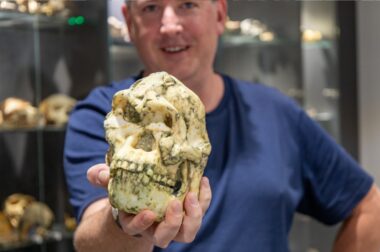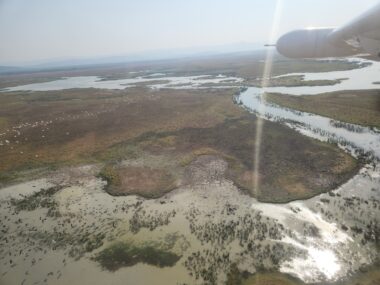Monash University researchers supporting Zoos Victoria to breed the Critically Endangered Helmeted Honeyeater with another subspecies to improve genetic health and fitness, have found that the benefits of such genetic mixing outweigh any risks.
Small woodland birds in the Meliphagoidea superfamily include a Yellow-tufted Honeyeater, common in Eastern Australia. But one of its subspecies, the Helmeted Honeyeater known for its head feather helmet, is Critically Endangered with fewer than 200 birds remaining. Its remanent population can be found in the Yellingbo Nature Conservation Area and became one of Victoria’s faunal emblems in 1971.
Like many other isolated populations of small size, the Helmeted Honeyeater lost much of its genetic diversity in recent years, making it vulnerable to a changing environment. Moreover, its reproductive fitness is significantly reduced by inbreeding: the most inbred birds raise only 1/10th of the total number of offspring raised by the least inbred birds. The addition of genetic variation from another population is required to reduce inbreeding and rescue fitness of the Helmeted Honeyeater.
Dr Alexandra Pavlova, from the School of Biological Sciences, and her colleagues, including researchers from Zoos Victoria, are leading a genetic rescue program for the Helmeted Honeyeater by breeding it with another subspecies.
Genetic enhancement must come from a different subspecies because the Helmeted Honeyeater is the last of its kind.
“Genetic rescue via gene flow from genetically diverse sources is the most effective way to improve fitness of isolated inbred populations,” Dr Pavlova said.
“However, when the only potential source of immigrants is a different subspecies that diverged long ago and occupies a different environment, genetic rescue may lead to reduced fitness of admixed offspring or maladaptation.
“Test cases are needed to evaluate how to manage such potentially risky rescues to deliver enhanced population fitness.”
Findings of a breeding trial conducted over five years at Zoos Victoria’s Healesville Sanctuary are described in a paper published recently in Biological Conservation.
Captive genetic rescue efforts are underway with a closely related Gippsland subspecies that diverged from the common ancestor with Helmeted Honeyeater thousands of years ago and has distinct morphology, mobility, and habitat preferences.
Short-term reproductive fitness was assessed for captive pairings of ‘pure’ Helmeted Honeyeater pairs, first- and second-generation inter-subspecific crosses, and backcrosses to Helmeted Honeyeater, taking into consideration sex, breeding season, age at breeding, and wild or captive origin of the parents.
“We have observed that, compared to ‘pure’ pairs, most admixed pair-types more readily formed a pair and built a nest, raised more nestlings, and had chicks that were less male-biased, with no signs of reduced fitness,” Dr Pavlova said.
“Our study is significant because it provides a positive example of how potentially ‘risky’ rescue options could help improve population genetic health and fitness. This is particularly important, because risky gene flow sources are becoming the only choice for many populations.”
Dr Pavlova said to maintain local adaptation, fitness monitoring should continue after release of the birds into the wild.
Media enquiries:
Silvia Dropulich
Marketing, Media & Communications Manager, Monash Science
T: +61 3 9902 4513 M: +61 435 138 743
Email: [email protected]


